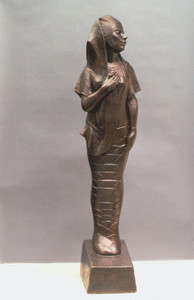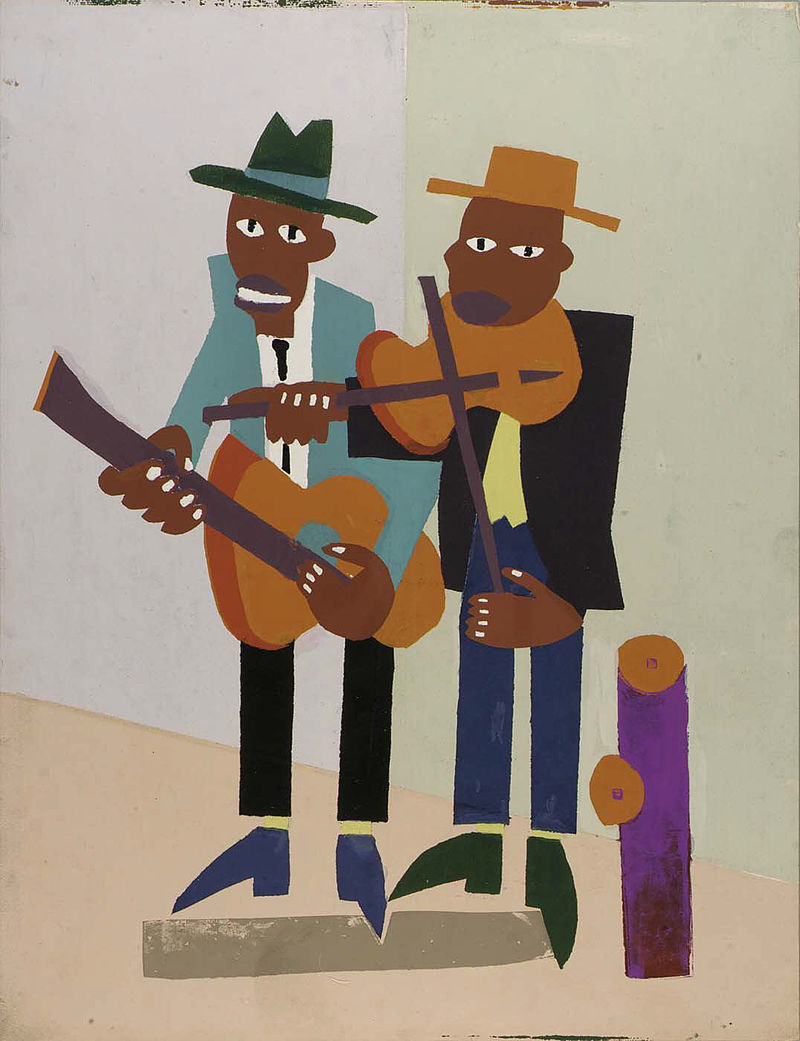- Mary Hazel

- Jun 11, 2020
- 2 min read
Feminist and Black Power Immortalized in a Bronze Sculpture
Ethiopia Awakening, Meta Vaux Warrick Fuller, c. 1921, Bronze Sculpture, 67x16x10"
Born in 1877 in Philadelphia, Meta Vaux Warrick Fuller grew to be one of the first prominent black female sculptors in America.
Her work, “Ethiopia Awakening,” is incredibly important to the Harlem Renaissance movement. Commissioned by W.E.B. Du Bois and exhibited in the 1921 America’s Making Exhibition in New York City, the bronze sculpture stands at over five feet featuring a black woman adorned with the headdress of Nemes and wrapped in a mummy’s gauze.
The meaning of the work is two-fold. Historically, Ethiopia was one of the only African countries to thwart the attempts of Western imperialism. The title of the piece suggests the determination and strife of African Americans, especially during this time. The second meaning is noted by the use of the Names headdress. Traditionally worn by Egyptian Pharaohs, the headdress and female imagery proclaims the dignity and strength of the African American woman.
This very statue became one of the leading symbols of the Harlem Renaissance, encompassing the idea of African American pride and identity at the turn of the century. Powerful in its noble glance but empathetic with her hand gently cupping her heart, Fuller’s “Ethiopia Awakening” showcases the metamorphic nature of the black consciousness.
“Here was a group who had once made history and now after a long sleep was awaking, gradually unwinding the bandage of its mummied past and looking out on life again, expectant but unafraid and with at least a graceful gesture.”
And that’s art.
Sources
"Harlem Renaissance Art Movement Overview and Analysis". TheArtStory.org. Content compiled and written by Rebecca Seiferle. Edited and revised, with Synopsis and Key Ideas added by Sarah Archino. First published on 23 Dec 2018. Updated and modified regularly. Accessed11 Jun 2020. https://www.theartstory.org/movement/harlem-renaissance/artworks/
Schomburg Center for Research in Black Culture, Art and Artifacts Division, The New York Public Library. "Ethiopia Awakening" New York Public Library Digital Collections. Accessed June 11, 2020. http://digitalcollections.nypl.org/items/671040d4-2bfa-0930-e040-e00a1806450c
















